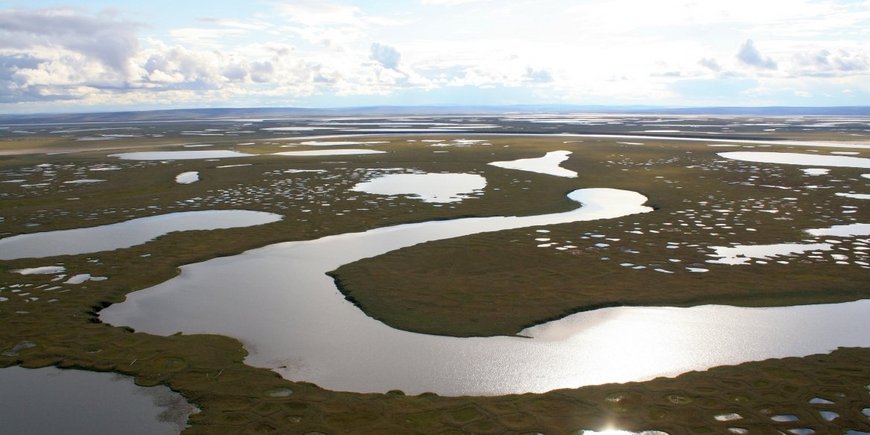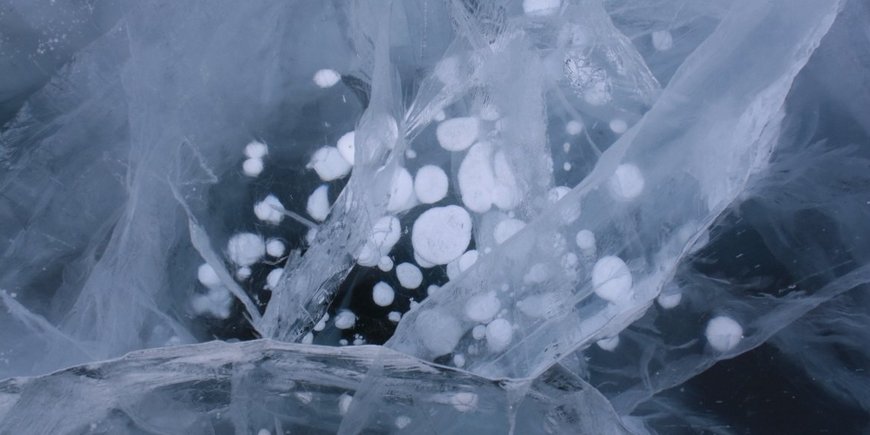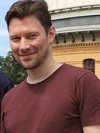What happens in the vast permafrost regions of the Arctic when the atmosphere heats up more and more? The question still drives climate researchers because the frozen ground contains large amounts of carbon, which can be converted by microbes into the greenhouse gases methane and CO2. If the gases are released, this could accelerate global warming even more. Now, GFZ researchers Torsten Sachs and Norman Rößger, together with colleagues from the University of Hamburg and the Alfred Wegener Institute in Potsdam, have published results from an almost twenty-year series of observations in Siberia that actually show that the summertime release of methane has increased by almost two percent per year since 2004. The cause, however, is not a more massive thawing of permafrost, the researchers say, but earlier onset and increased plant growth due to increased air temperature. The study appeared on October 27 in the journal Nature Climate Change.
Data collection in the Siberian Lena Delta
The data come from Samoylov Island in the Lena Delta in Siberia. A measuring station has been located there on a specially erected tower since 2002. Additional measurements, for example of ground temperatures and thaw depths, were carried out in the surrounding area. Initially, the researchers limited their measurements to the summer months, as winter conditions were too harsh and travel too problematic. Moreover, there was no year-round power supply. After the construction of a permanently manned research station in 2013, it was possible to gradually extend the measurement series to the whole year. Since the Russian invasion of Ukraine in February 2022, German-Russian cooperation has been frozen, so no one can say for sure whether measurements there will continue.
Measured for the first time: Rise in methane emissions in the early summer tundra
The researchers used data from 2002 to 2019 for their analysis. “We probably provide the first evidence of an increase in methane emissions from the early summer tundra over the last two decades,” the team writes in Nature Climate Change. “We can also confirm earlier studies that said the cold season should definitely not be ignored: up to 39% of a year's emissions take place during this period.”
GFZ researcher Torsten Sachs, corresponding author and one of the principal investigators, explains the background: “We actually see for the first time from measured data that something is happening in the Arctic in terms of methane emissions and that this is clearly related to the increase in temperature.” He cautions: “However, we can only make statements about the summer months of June, July and August, in September it already becomes unclear and for the rest of the year we simply lack sufficient data.” Thus, a shift of emissions within the summer with higher rates in the early summer months is clear, but no reliable statement can be made about whether more greenhouse gas is released over the year as a whole.
Importance of vegetation for methane emissions
The researchers explain the shift with the increased growth of mosses and sedges – the classic tundra vegetation. Growing roots in the soil and biochemical processes lead to increased methane emissions in June and July. The fear that the ground would thaw more deeply is not confirmed by the data analyzed in the current study. On the contrary: “We did not find a significant increase in ground temperature despite a 0.3 degree rise in air temperature,” says the second principal investigator, Lars Kutzbach of the University of Hamburg. The team suspects that the stronger growth of the plants protects the soil from direct solar radiation. Thus, the vegetation there acts as a kind of temperature buffer.
Importance of long data series for reliable statements
In the global methane balance, the permafrost regions of the Arctic play a small role, contributing around three percent to the burden on the atmosphere, with the majority worldwide coming from agriculture. In general, it is difficult to accurately quantify emissions. “It is all the more important that we arrive at reliable statements through long data series, which we can then compare with the models,” says Kutzbach.
Original publication:
Rößger, N., Sachs, T., Wille, C. et al. Seasonal increase of methane emissions linked to warming in Siberian tundra. Nat. Clim. Chang. (2022). doi: 10.1038/s41558-022-01512-4












![[Translate to English:] Torsten Sachs in front of a climate station on a field](/fileadmin/_processed_/3/9/csm__TorstenSachs_bearbeitet_GS_4a1365ef84.jpeg)

![[Translate to English:] left image flood at the Ahrtal: image from above, several houses are flooded; left image:: Heidi Kreibich;](/fileadmin/_processed_/4/4/csm_Bild2_9af0130e9f.png)



![[Translate to English:] Start der Vega Rakete](/fileadmin/_processed_/6/4/csm_20231201-kachel_Vega-VV23-launch_ESA-CNES-Arianespace_706716b68c.jpeg)









![[Translate to English:] Poster exhibition at the Brandenburg Hydrogen Day at the GFZ, some participants in the foreground](/fileadmin/_processed_/6/5/csm_Erster_Brandenburgischer_Wasserstofftag_GFZ_402fcec95e.jpeg)
![[Translate to English:] Group picture of the participants](/fileadmin/_processed_/9/4/csm_20231108_CAWa-Workshop-Tashkent_Gruppenbild_99ea779d8a.jpeg)

![[Translate to English:] [Translate to English:] Hörsaal](/fileadmin/_processed_/e/6/csm_H%C3%B6rsal_e21ac645fb.jpeg)


![[Translate to English:] The Delegations in the Historic Library on the Telegrafenberg. In the back there are from left to right, the Dutch Ambassador for Germany, Ronald van Roeden, the Dutch Minister for Education, Culture and Science, Robbert Dijkgraaf and the scientific director of the GFZ, Susanne Buiter.](/fileadmin/_processed_/d/b/csm_Kachel-2_9eba4b4212.jpeg)

